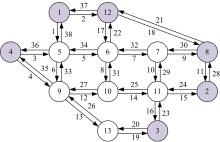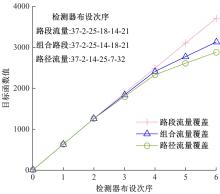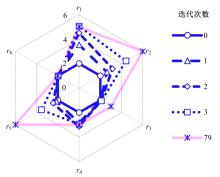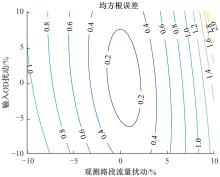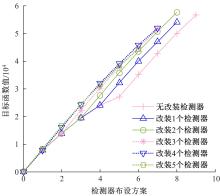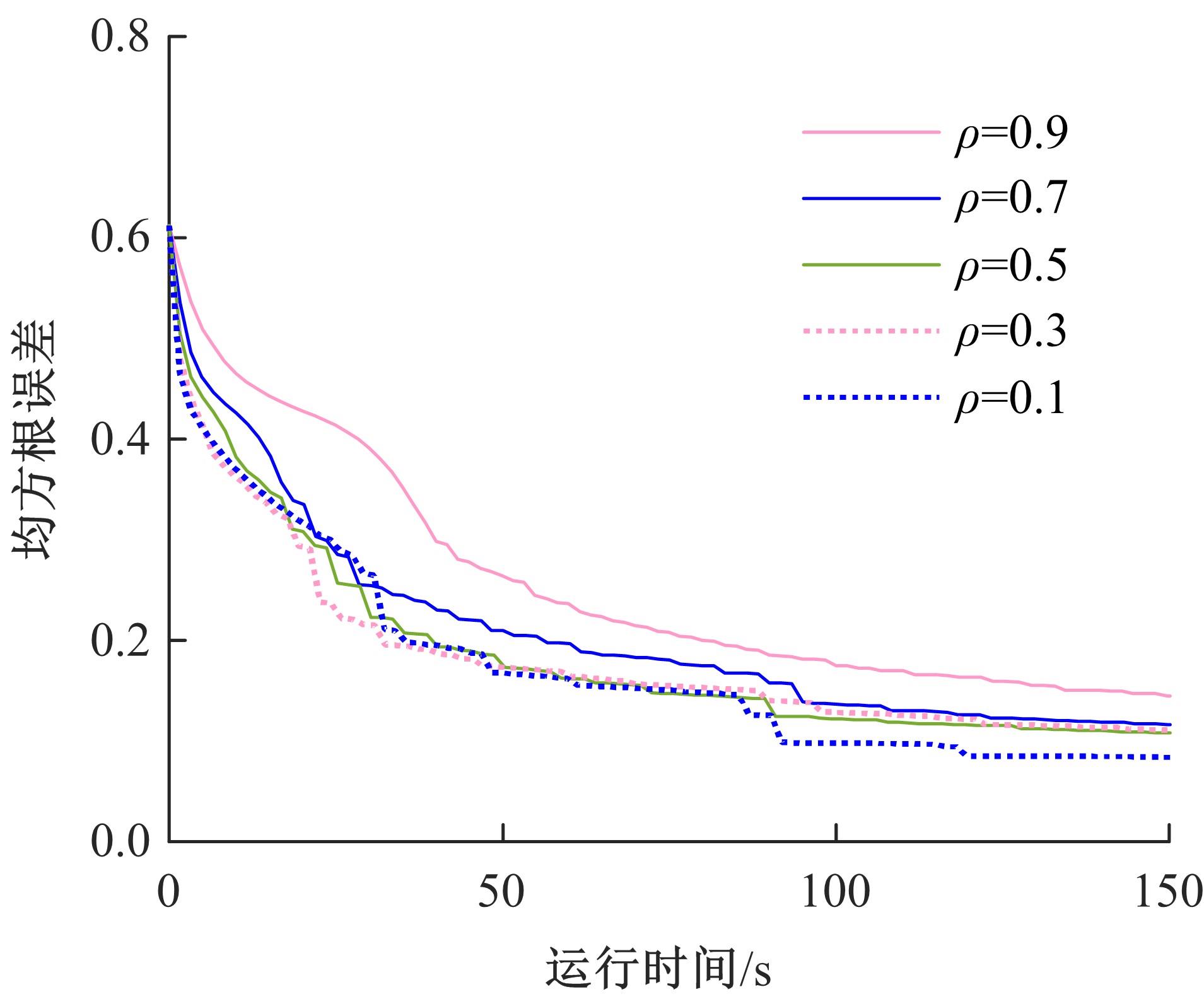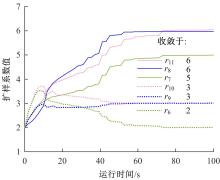Journal of Jilin University(Engineering and Technology Edition) ›› 2023, Vol. 53 ›› Issue (4): 1070-1077.doi: 10.13229/j.cnki.jdxbgxb.20210782
Sensor deployment strategy and expansion inference of mobile phone data for traffic demand estimation
Chao SUN1( ),Hao-wei YIN1,Wen-yun TANG2,Zhao-ming CHU3
),Hao-wei YIN1,Wen-yun TANG2,Zhao-ming CHU3
- 1.School of Automotive and Traffic Engineering,Jiangsu University,Zhenjiang 212013,China
2.College of Automobile and Traffic Engineering,Nanjing Forestry University,Nanjing 210037,China
3.Research Institute for Road Safety of MPS,Beijing 100062,China
CLC Number:
- U491
| 1 | Chen X, Peng L, Zhang M, et al. A public traffic demand forecast method based on computational experiments[J]. IEEE Transactions on Intelligent Transportation Systems, 2016, 18(4): 984-995. |
| 2 | 李军, 郑培庆. 基于IC卡数据的公交通勤熵变模型的构建与应用[J]. 交通运输系统工程与信息, 2020, 20(1): 234-240. |
| Li Jun, Zheng Pei-qing. Construction and application of transit commuting entropy change model based on smart card data[J]. Journal of Transportation Systems Engineering and Information Technology, 2020, 20(1): 234-240. | |
| 3 | 朱才华, 孙晓黎, 李岩. 站点分类下的城市公共自行车交通需求预测[J]. 吉林大学学报: 工学版, 2021, 51(2): 531-540. |
| Zhu Cai-hua, Sun Xiao-li, Li Yan. Forecast of urban public bicycle traffic demand by station classification[J]. Journal of Jilin University (Engineering and Technology Edition), 2021, 51(2): 531-540. | |
| 4 | 孙超, 宋茂灿, 陈志超, 等. 观测路径出行时间下随机网络交通需求估计[J]. 中国公路学报, 2021, 34(3): 206-215. |
| Sun Chao, Song Mao-can, Chen Zhi-chao, et al. Traffic demand estimation with observed path travel time in stochastic network[J]. China Journal of Highway and Transport, 2021, 34(3): 206-215. | |
| 5 | Wen T, Gardner L, Dixit V, et al. Two methods to calibrate the total travel demand and variability for a regional traffic network[J]. Computer-Aided Civil and Infrastructure Engineering, 2018, 33(4): 282-299. |
| 6 | Sun C, Chang Y, Shi Y, et al. Subnetwork origin-destination matrix estimation under travel demand constraints[J]. Networks and Spatial Economics, 2019, 19(4): 1123-1142. |
| 7 | Sun W, Schmöcker J D, Fukuda K. Estimating the route-level passenger demand profile from bus dwell times[J]. Transportation Research Part C: Emerging Technologies, 2021, 130: No.103273. |
| 8 | Caceres N, Wideberg J P, Benitez F G. Deriving origin-destination data from a mobile phone network[J]. IET Intelligent Transport Systems, 2007, 1(1): 15-26. |
| 9 | Wang Z B, Wang S C, Lian H T. A route-planning method for long-distance commuter express bus service based on OD estimation from mobile phone location data: the case of the Changping Corridor in Beijing[J]. Public Transport, 2021, 13(1): 101-125. |
| 10 | Rokib S A, Karim M A, Qiu T Z, et al. Origin-destination trip estimation from anonymous cell phone and foursquare data[C]∥Transportation Research Board 94th Annual Meeting, Washington DC, USA, 2015: 1-18. |
| 11 | Ge Q, Fukuda D. Updating origin-destination matrices with aggregated data of GPS traces[J]. Transportation Research Part C: Emerging Technologies, 2016, 69: 291-312. |
| 12 | Demissie M G, Antunes F, Bento C, et al. Inferring origin-destination flows using mobile phone data: a case study of Senegal[C]∥The 13th International Conference on Electrical Engineering/Electronics, Computer, Telecommunications and Information Technology, Chiang Mai, Thailand, 2016: 1-6. |
| 13 | Wang J, Wang D H, Song X M, et al. Dynamic OD expansion method based on mobile phone location[C]∥Fourth International Conference on Intelligent Computation Technology and Automation, Shenzhen, China, 2011: 788-791. |
| 14 | Xu X D, Lo H K, Chen A, et al. Robust network sensor location for complete link flow observability under uncertainty[J]. Transportation Research Part B: Methodological, 2016, 88: 1-20. |
| 15 | Liang Y Y, Wu Z Z, Hu J. Road side unit location optimization for optimum link flow determination[J]. Computer-Aided Civil and Infrastructure Engineering, 2020, 35(1): 61-79. |
| 16 | Sun X, Bai Z X, Lin K, et al. Optimization model of traffic sensor layout considering traffic big data[J]. Journal of Advanced Transportation, 2020(19): 1-11. |
| 17 | Xie C C, Shao M H. Optimal time interval for investigating prior information in network sensor location problem[J]. Transportation Research Record, 2021, 2675(3): 238-248. |
| [1] | Hong-fei JIA,Ying-jun XU,Li-li YANG,Nan WANG. League member selection and benefit distribution of commercial vehicles multi⁃modal transportation [J]. Journal of Jilin University(Engineering and Technology Edition), 2023, 53(4): 1060-1069. |
| [2] | Xian-min SONG,Shu-tian YANG,Ming-xin LIU,Zhi-hui LI. Fluctuation characteristics and prediction method of bus travel time between stations [J]. Journal of Jilin University(Engineering and Technology Edition), 2022, 52(8): 1792-1799. |
| [3] | Zhi ZHENG,Bo GENG,Fu-min WANG,Jun-hong DONG,Si-si WEI. Improvement of protective ability for existing low⁃grade concrete guardrail [J]. Journal of Jilin University(Engineering and Technology Edition), 2022, 52(6): 1362-1374. |
| [4] | Wen-jing WU,Yong-bin ZHAN,Li-li YANG,Run-chao CHEN. Coordinated control method of variable speed limit in on⁃ramp area considering safety distance [J]. Journal of Jilin University(Engineering and Technology Edition), 2022, 52(6): 1315-1323. |
| [5] | Hong-fei JIA,Zi-han SHAO,Li-li YANG. Ride⁃sharing matching model and algorithm of online car⁃hailing under condition of uncertain destination [J]. Journal of Jilin University(Engineering and Technology Edition), 2022, 52(3): 564-571. |
| [6] | Xing-hua LI,Fei-yu FENG,Cheng CHENG,Wei WANG,Peng-cheng TANG. Choice preference analysis and modeling of ridesplitting service [J]. Journal of Jilin University(Engineering and Technology Edition), 2022, 52(3): 578-584. |
| [7] | Tian-jun FENG,Xue-lu SUN,Jia-sheng HUANG,Xiu-juan TIAN,Xian-min SONG. Two-phase signal intersection delay based on three crossing modes [J]. Journal of Jilin University(Engineering and Technology Edition), 2022, 52(3): 550-556. |
| [8] | Xian-tong LI,Wei QUAN,Hua WANG,Peng-cheng SUN,Peng-jin AN,Yong-xing MAN. Route travel time prediction on deep learning model through spatiotemporal features [J]. Journal of Jilin University(Engineering and Technology Edition), 2022, 52(3): 557-563. |
| [9] | Yi-ran WANG,Jing-xu CHEN,Yue-ping WANG,Jin-biao HUO,Zhi-yuan LIU. Instant demand⁃responsive scheme for customized bus considering service fairness [J]. Journal of Jilin University(Engineering and Technology Edition), 2022, 52(11): 2574-2581. |
| [10] | Yan-feng JIA,Da-yi QU,Lu LIN,Rong-han YAO,Xiao-long MA. Coordinated speed control of connected mixed traffic flow based on trajectory [J]. Journal of Jilin University(Engineering and Technology Edition), 2021, 51(6): 2051-2060. |
| [11] | Chang-fu ZONG,Long WEN,Lei HE. Object detection based on Euclidean clustering algorithm with 3D laser scanner [J]. Journal of Jilin University(Engineering and Technology Edition), 2020, 50(1): 107-113. |
| [12] | Liang JIANG,Yi HE. Risky driving behavior and influencing factors analysis for electric two⁃wheeler [J]. Journal of Jilin University(Engineering and Technology Edition), 2019, 49(4): 1107-1113. |
| [13] | Xiao⁃qin LUO,Dian⁃hai WANG,Sheng JIN. Traffic signal actuated control at isolated intersections for heterogeneous traffic [J]. Journal of Jilin University(Engineering and Technology Edition), 2019, 49(3): 695-704. |
| [14] | Zhi⁃hui LI,Tao ZHONG,Yong⁃hua ZHAO,Yong⁃li HU,Hai⁃tao LI,Jing⁃wei ZHAO. Pedestrian tracking algorithm for autonomous driving [J]. Journal of Jilin University(Engineering and Technology Edition), 2019, 49(3): 680-687. |
| [15] | QU Da-yi,YANG Jing-ru,BING Qi-chun,WANG Wu-lin,ZHOU Jing-chun. Arterial traffic offset optimization based on queue characteristics at adjacent intersections [J]. Journal of Jilin University(Engineering and Technology Edition), 2018, 48(6): 1685-1693. |
|
||
